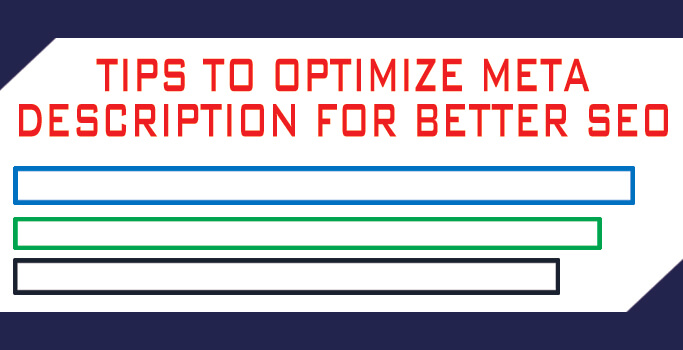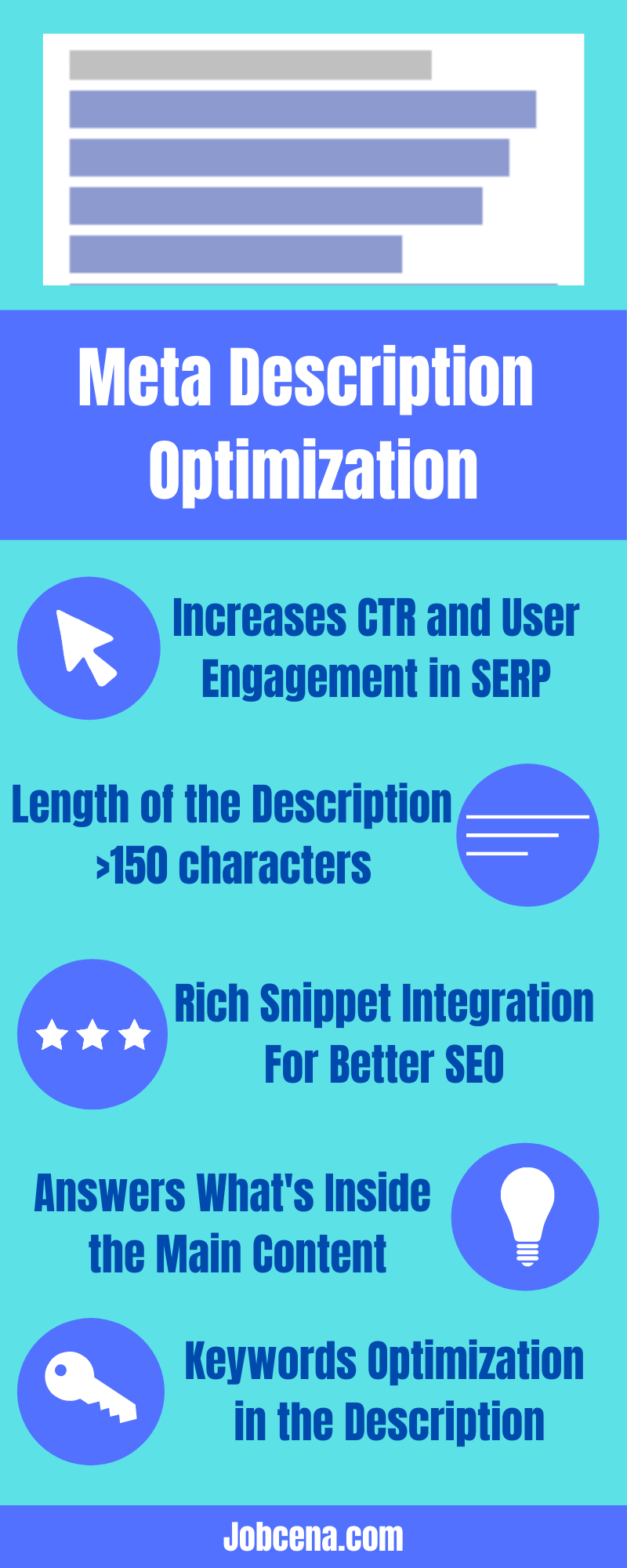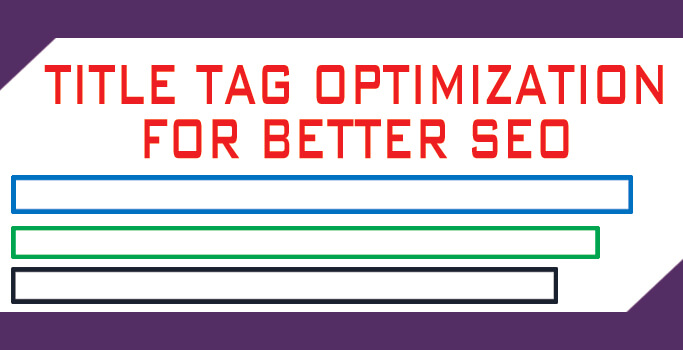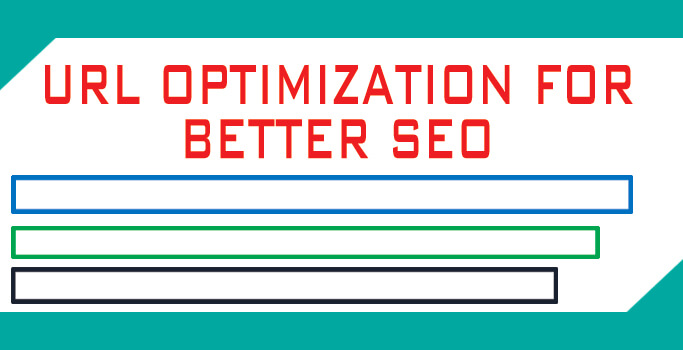You should have been aware of how important is to optimize the title tag for better SEO. The meta description does have an important(indirect) role in SEO.
While the meta description doesn’t play a major part in Google ranking factors, the optimization is necessary for a better understanding of the content on the page and to improve the CTR of the website in the SERP.
More than search engine optimization, a good description is said to increase the CTR up to 5.8% in SERP.
With the combined efforts of a good title tag, crisp description, perfect content, along with other ranking factors, your website can outperform the competition.
In this article let me explain how to optimize meta description and reasons why you should work on meta description.
What is the Meta Description?
The Meta Description is a piece of content inside the HTML tag, that gives an outline of what’s inside the content of a webpage.
While the meta description will not be displayed on the webpage itself, it’s published in the search engine SERP along with the title tag and the slug.
You can take a look at the model SERP with the meta description highlighted below.
Meta Description Optimization is more about CTR, not SEO:
While the meta description played an important role in ranking websites back in the early 2000s, search engines like Google declared that meta description and meta keywords are no more taken into account for ranking a webpage.
Instead, they have created other sets of ranking formula algorithms to list out the best websites in the SERP that don’t depend mostly on the website’s metadata.
When Google was depending on the metadata for ranking websites, they have noticed a lot of webmasters misused the metadata by keyword stuffing instead of generating good content just for the sake of ranking their websites number one in SERP.
The result was, the webmaster and bloggers were working hard to manipulate SERP instead of producing good content and great user experience. That is they were busy convincing the robots instead of valuable humans.
So, Google dropped out of its old school ranking technique based on metadata. (Let me tell you one little secret of how a good meta description can indirectly affect the ranking in the latter part of this article.)
What now?
It’s dead, the meta description is no longer used to rank the websites.
So what? Should I don’t have to worry about meta descriptions anymore?
If you think so, you’re wrong. Search engines like Google still use the meta description to display it on the SERP snippet as shown above.
So can I add some nonsense to the meta description?
Again wrong…
While Google doesn’t worry about the meta description anymore.
Mmmm, it’s more like a guy in a coma with no use,
Google displays the description in the snippet for a purpose i.e. for the search engine users.
When people search in Google, before they click a website, they read the title and the description to find what’s inside the content. Mind that few read the URL, so take care of it!
The title should be in such a way that it tells the users what is the topic.
And the description should give a brief answer to the topic and what’s inside the webpage content.
The description is the main thing that convinces the users whether to click your website or not.
A good description will trigger the user to click your website in the SERP. While the bad description with no meaning will push them away looking further for better results. Been said we can’t control Google pulling out its own description from the main content to display in SERP sometimes that makes no sense.
So, here’s the answer! Whatever high-quality trademark content your website has with world-class design. If there is no organic traffic, it makes no sense. It’s just like a beautiful girl inside a dark room.
In the end, it’s all related to website CTR, not SEO in most cases!
A good title and description is the key factor for a higher click-through rate(CTR).
After analyzing five million search results, Brain Dean’s research shows that the pages with meta descriptions get 5.8% higher CTR than the page without meta description.
Higher CTR equals more traffic!
How to Optimize the Meta Description – Infographics:
So, now you know the importance of meta description in a website, it’s time to learn how to optimize the meta description.
Before getting into the content, here is a simple infographic with a few different key points to remember about meta description optimization.
7 Tips to Create a Good Meta Description for Better SEO and Higher CTR:
Know the fact that the website’s position in the SERP is the key to generate higher CTR. Been said the first result in the SERP receives an average of 31.7% CTR.
These optimization tips will increase user engagement of your website in the search results which doesn’t mean that your website with a good meta description that ranks number 5 will outperform the website with a poor meta description that ranks number one in the SERP.
So, make sure to work on other SEO optimization techniques to rank higher on SERP. Besides, optimize the description for better engagement.
Basic Tips for Creating Good Description:
1. Length of the Meta Description:
The primary thing you should notice while creating the meta description is its length.
I’ve seen people writing paragraphs in the description while Google is known to display not more than 160 characters.
While there is no specific rule set, the optimal length of the meta description is 120 characters to 150 characters.
Anything above this won’t get displayed in SERP. Google will truncate a part of the description on SERP if the description is over limit as shown below.
Similarly, if you aren’t aware of the optimal length for the title tag, it’s 50 to 60 characters. You should optimize the length of the title tag similar to the meta description.
It’s a simple optimization step that you must follow before publishing the content on your website.
If you’re using the WordPress CMS platform plugins like Yoast SEO and Rank Math will warn you regarding the length if it’s too short or long.
2. Relevancy of Title and Description:
People read the title and then the description before they click on a search result.
In a few cases, people read only the title and click the website in the search result. Been said the perfect title tag increases CTR up to 17.1% in SERP.
But some people won’t get convinced with the title and they go for reading the description to find additional information about what’s inside the webpage.
So, there should be relevance between the title and the description. The description should give a brief explanation relevant to the title and also it should express what the users can find if they click the search result.
A perfect match of title and description convince the users to click your website in SERP which eventually increases the CTR.
3. Using Keywords in Meta Description:
While I already said that Google doesn’t use meta description in its ranking factors anymore, keyword optimization in the meta description has a price.
Google highlights the keywords in the meta description as shown above.
The search user eyes will easily catch the highlighted keyword which will trigger their subconscious mind to click your website in SERP.
Advanced Tips to Optimize Meta Description for Better CTR:
4. Meta Description should give a reason for User to Click:
The meta description should be created in such a way that when the users read the description, it should give a reason why they should click your website.
It should answer what the users can find inside the website if they click your website in the search result.
A vague description can cause the users to skip your website in SERP and move to other search results.
So, take care of the intent of the meta description that should be convincing for the users to click your website.
5. Engage the users with Suspense:
It’s a known fact that creating suspense will increase the eagerness of human beings to explore things.
Make use of this strategy to create a meta description in such a way that it builds suspense in the mind of the search engine users.
Use the suspense that should make the users want more that should eventually trigger them to click your website SERP.
Inserting the suspense words inside the meta description naturally is one of the best optimization techniques to increase the CTR.
6. Google Rich Snippets:
The rich snippets are enhanced search results displayed in Google SERP.
You can work on adding star ratings using schema to potentially increase the CTR.
Apart from the star ratings, there are over 28 Google rich snippets you should know.
7. Branded Meta Description:
While it’s a wise idea to add the brand name at the end of the title, add your brand name in the description if it’s necessary to improve branding.
It’s now all about branding that creates a connection between the readers and the webmasters.
Building trust on the internet is one of the most important things. Proper branding with unique content is the key to build trust.
There aren’t much you can do to optimize the meta description other than these. If you’ve got some ideas, feel free to share it in the comments to help other readers.
Reason Why Google Pulls out Description from the Content:
While Google uses the meta description to display the description on the search results, sometimes Google pulls out content from the main content of the webpage instead of using the meta description.
Google automatically does this in order to enhance the search experience for its users.
I’ve seen my website listed in SERP with custom description by Google which doesn’t even make sense.
Unfortunately, we can’t do anything about this since it is automatic and in control of Google.
Google only changes the content in the description. They don’t change the title as they do for description.
Does Inclusion of Keywords in Meta Description Necessary?
As said before, the inclusion of keywords in the meta description won’t affect the website’s ranking in SERP.
That doesn’t mean you should create the meta description without using keywords. The keywords should be present in the meta description naturally without over-optimizing.
By default, the keywords will get included in the meta description exactly or partially when you create the description. So, you don’t have to force the key phrase insertion in the meta description in the name of optimizing the meta description.
Meta Description Optimization for Better SEO:
How does the Meta Description Indirectly affect SERP:
Google doesn’t consider the meta description and the meta keywords as a ranking factor.
But, there is an indirect relationship between the meta description and ranking in SERP.
This is an indirect signal that has negligible effects on the search engine ranking.
Speaking about meta description’s part in ranking, this is the only way that it can be related to the SEO optimization.
Search engine users read the title and description in SERP before they click a website. Poor optimization could result in skipping your website result to move on to the next website. When the website(s) that ranks lower in SERP continuously outperforms the website that ranks higher, there are chances that a poorly optimized website could lose ranking to a certain extent due to low CTR. Poorly optimized meta description could also be a reason for lower CTR that may indirectly affect the ranking of the website.
Do you know the fact that Organic traffic helps to improve the Alexa ranking of your website?
Work on Improving User Experience:
Google now considered user experience as one of the most important factors for ranking websites. The websites that rank in Google should provide a good user experience to the people who visit their website from Google.
Google automatically monitors the user experience by calculating the bounce rate and time on site. These are prime factors used to determine the user experience of the website.
How it can be related to the meta description is that the content irrelevancy can make the users get out of your website in no time. Poor bounce rate could be a signal to notify Google regarding the content that users don’t find useful. This could eventually lead to the drop in rankings.
So, over-optimizing the meta description and title tag with keywords and fake promises about the content inside could trigger a negative signal.
Hence following proper practices to optimize meta description with great content is the only way to gain higher positions in SERP.







